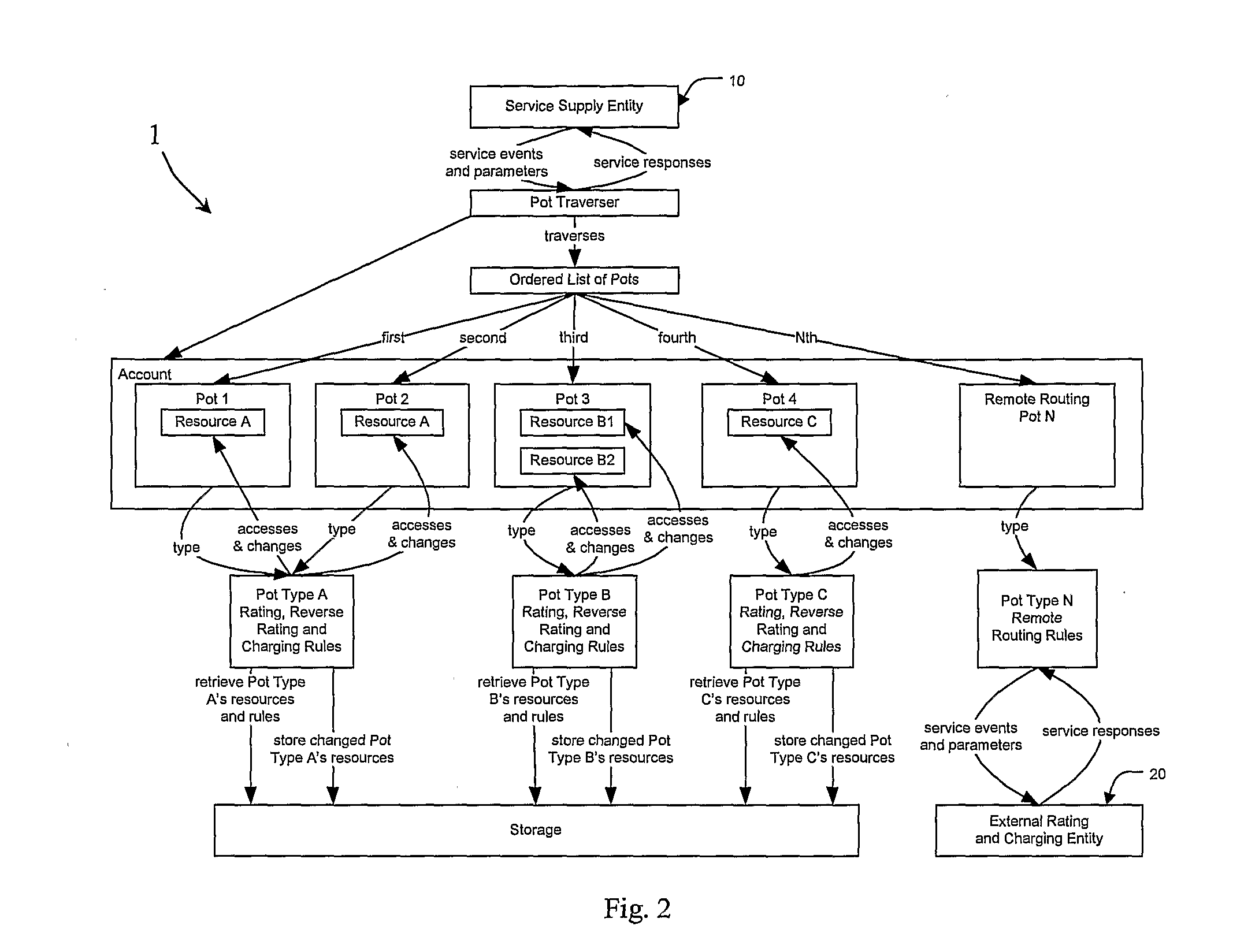Communication network rating and charging engine
a charging engine and communication network technology, applied in the field of communication networks, can solve the problems of increasing the impracticality of extending the product to implement the non-standard requirements of individual network operators, affecting the service life of the product,
- Summary
- Abstract
- Description
- Claims
- Application Information
AI Technical Summary
Benefits of technology
Problems solved by technology
Method used
Image
Examples
example scenario 1
Basic Operation
[0151]This illustrates:[0152]lazy and eager provisioning techniques,[0153]multiple local pot types, each with different rating and charging rules and different Resources,[0154]multiple instances of local pot types,[0155]session-based and isolated interactions with the service supply entity, including different service types and parameters,[0156]interaction with the persistent database,[0157]engine core 2 traversing the Pots and invoking the Pots' rules.
[0158]Consider a “StandardPrepaid” Pot Type with these rating and charging rules:[0159]voice calls cost £0.10 / minute before noon and £0.20 / minute after noon,[0160]Ringtones cost £1.00 at all times,[0161]SMSs cost £0.10 at all times,[0162]there are no time restrictions on when the pot is valid (i.e. can be used to fund services).
[0163]Consider a subscriber's account that contains a single StandardPrepaid Pot:[0164]potId is 456. In the description below the shorthand pot-456 is used to refer to the pot with id 456,[0165]b...
example scenario 2
Remote Routing Pot
[0211]This illustrates how a remote routing pot interacts with an external rating and charging entity.
[0212]Consider a “BusinessPostpaid” pot type that is used to route relevant service events to an external postpaid billing and charging entity. The rating and charging rule is:[0213]if the event's destination MSISDN is prefixed by a predefined shortcode then forward the event and its parameters to the external postpaid entity, and wait for the corresponding response,[0214]if not prefixed, then do nothing.
[0215]Consider an account containing:[0216]StandardPrepaid pot-456, as above[0217]BusinessPostpaid pot-23, prefix 9876
[0218]An SMS is requested, so the service supply equipment sends a service debit to the engine 1, with service type “SMS”, destination 987601179017896, and quantity 1. The engine core 2 retrieves the account's pots from the database and using a “BusinessPostpaid pots have higher priority” pot traversal rule, creates this ordered list of pots: [pot-2...
PUM
 Login to View More
Login to View More Abstract
Description
Claims
Application Information
 Login to View More
Login to View More - R&D
- Intellectual Property
- Life Sciences
- Materials
- Tech Scout
- Unparalleled Data Quality
- Higher Quality Content
- 60% Fewer Hallucinations
Browse by: Latest US Patents, China's latest patents, Technical Efficacy Thesaurus, Application Domain, Technology Topic, Popular Technical Reports.
© 2025 PatSnap. All rights reserved.Legal|Privacy policy|Modern Slavery Act Transparency Statement|Sitemap|About US| Contact US: help@patsnap.com



